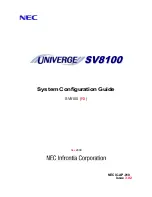
1300 Henley Court
Pullman, WA 99163
509.334.6306
www.digilentinc.com
Basys 2
™ FPGA Board Reference Manual
Revised April 8, 2016
This manual applies to the Basys 2 rev. C
DOC#: 502-155
Copyright Digilent, Inc. All rights reserved.
Other product and company names mentioned may be trademarks of their respective owners.
Page
1
of
12
Overview
The Basys 2 board is a circuit design and implementation platform that anyone can use to gain experience building
real digital circuits. Built around a Xilinx Spartan-3E Field Programmable Gate Array and a Atmel AT90USB2 USB
controller, the Basys 2 board provides complete, ready-to-use hardware suitable for hosting circuits ranging from
basic logic devices to complex controllers. A large collection of on-board I/O devices and all required FPGA support
circuits are included, so countless designs can be created without the need for any other components.
Four standard expansion ports allow designs to grow beyond the Basys 2 board using breadboards, user-designed
circuit boards, or Pmods (Pmods are inexpensive analog and digital I/O modules that offer A/D & D/A conversion,
motor drivers, sensor inputs, and many other features). Signals on the 6-pin connectors are protected against ESD
damage and short-circuits, ensuring a long operating life in any environment. The Basys 2 board works seamlessly
with all versions of the Xilinx ISE tools, including the free WebPack. It ships with a USB cable that provides power
and a programming interface, so no other power supplies or programming cables are required.
The Basys 2 board can draw power and be programmed via its on-board USB2 port. Digilent’s freely available PC-
based Adept software automatically detects the Basys 2 board, provides a programming interface for the FPGA and
Platform Flash ROM, and allows user data transfers (see
www.digilentinc.com
for more information).
Xilinx Spartan3E-100 CP132
VGA Port
Platform
Flash
(config ROM)
Settable Clock
Source
(25 / 50 / 100 MHz)
Full Speed
USB2 Port
(JTAG and data transfers)
20
JA
JB
JC
JD
JTAG
port
I/O Devices
PS/2
Port
Pmod Connectors
4
4
4
4
8 bit
color
2
32
Data
port
Figure 1. The Basys 2 board block diagram and features.
100,000-gate Xilinx Spartan 3E FPGA
Atmel AT90USB2 Full-speed USB2 port
providing board power and programming/data
transfer interface
Xilinx Platform Flash ROM to store FPGA
configurations
8 LEDs, 4-digit 7-segment display, 4 buttons, 8
slide switches
PS/2 port and 8-bit VGA port
User-settable clock (25/50/100MHz), plus
socket for 2
nd
clock
Four 6-pin header expansion connectors
ESD and short-circuit protection on all I/O
signals.






























